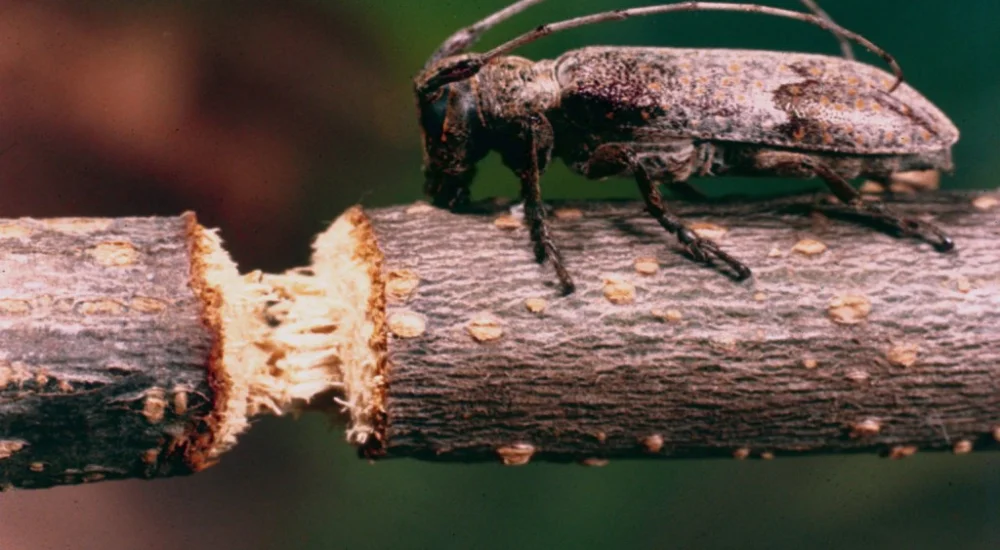
Girdling can silently kill trees. It causes slow decline and death if untreated. But can you stop it from killing your tree? Yes, you can.
In this guide, we’ll explore girdling. With some simple tips and a bit of care, you can ensure your trees stay vibrant and strong for years to come. We will cover what it is and its causes. Also, how to spot it in your trees. Crucially, how to stop it from killing your beloved green friends. Let’s get started!
Introduction to Girdling
What is Girdling?
Girdling is a condition on trees in which there is bark loss and can result in the tree’s death if nothing is done about it. This problem kills the tree by keeping water and nutrients from getting to the top portion of the tree.
Importance of Identifying and Addressing Girdling
Spotting and fixing girdling in trees is crucial, it keeps them healthy and long-lived. Otherwise, it can lead to irreversible damage and death. Learn to spot the signs of girdling. Take quick action to save your trees from this silent threat.
Understanding the Causes of Girdling
Natural Causes
Trees can become girdled naturally. This can be caused by animal activity, frost damage, competition with other plants, bacteria, etc.
Human-Induced Causes
Human activities can also contribute to girdling in trees. Lawnmowers, string trimmers, or construction equipment can cause mechanical damage. They can injure tree bark and create girdling wounds. Improper planting techniques can also lead to girdling. These include planting trees too deeply or not removing wire or burlap from the root ball.
Signs and Symptoms of Girdling. Spotting Girdling in Trees
Symptoms of girdling can be different based on where the injury is located and how severe it is. Signs could be visible on the branches or trunk. These could be lumps in the trunk, fissures in the bark, or missing bark. The foliage exhibits above-ground symptoms. They may include wilting, yellowing, or browning leaves. They can also cause stunted growth. Root rot, reduced root growth, and soil heaving occur below ground.
Visible Signs on Trunk and Branches
Check the trunks and branches of your trees on a regular basis for signs of injury or damage. Seek for indications of girdling, such as areas devoid of bark, wounds, cracks, or constrictions. Look for any differences in the bark’s colour or texture, as well as any strange bulges or depressions.
Above-Ground Symptoms in Foliage
Do not underestimate leaves yellowing, browning or wilting if it’s not near autumn. This can be a sign of stress, deterioration or disease. Lack of nutrients and water can also cause leaves discolouration so inspect the problem if you notice anything out of the ordinary. This could also be because of girdling. Look for any patterns of leaf loss or dieback. They could suggest a problem with the tree’s veins.
Below-Ground Symptoms in Roots
Girdling is a process that occurs above ground but sometimes it can affect the roots as well. When you plant your tree check the soil for signs of other plants’ root damage or decay. Look for soil heaving, exposed roots, or fungi. These indicate issues with the tree’s roots.
Preventing and Treating Girdling
Proper Planting Techniques
If you plant trees appropriately you can avoid tree gridling altogether. This is done by making sure the root collar of the tree is levelled with the soil when planting. Additionally, confirm that the root is free of any remaining burlap, cables, or materials. Refrain from planting trees too deeply as this may cause girdling and root asphyxia.
Root Pruning and Management
If you suspect that girdling is from root crowding or encircling roots, consider root pruning. It will ease the pressure on the tree. Carefully remove any circling or girdling roots. Then, spread out the remaining roots in the planting hole. This will encourage healthy root growth and reduce the risk of girdling in the future. Additionally, protective measures such as tree guards and careful maintenance routines can prevent future girdling incidents.
Girdling Removal Techniques
If girdling has already begun, the tree must be saved immediately. What you can do depends on how severe the girdling is. To establish the good wood underlying, you might be able to remove the damaged cambium and bark. Use a sharp chisel or knife. Remove the girdled tissue with caution. Be vigilant not to harm the wood underneath, if you’re not eager to try curing the tree, get a professional tree surgery team to do so.. Seal the exposed wood to keep moisture and bacteria away.
Monitoring and Maintenance
Prevention is the best case scenario so you should monitor your trees often. Check your trees often for damage or stress. Take quick action if you see problems. Care for your trees well. This includes watering, fertilising, and pruning. It ensures their health and vigour.
Conclusion: Preserving Tree Health Through Girdling Awareness
Girdling can seriously harm your trees. But, with awareness and proactive management, you can prevent and treat it. Learn to spot girdling. Take quick action to fix it. You can save your trees from this silent killer. It will ensure that they thrive for years to come.
Tree owners can respond quickly to girdling by being aware of its symptoms, which include decreased foliage, slowed development, and noticeable damage to the bark. Removing girdling roots, modifying mulch levels, and making sure appropriate fertilisation and watering procedures are followed are all effective treatments.
If you gained new insights from this article, explore our blog, Gimkit, for more enlightening content.